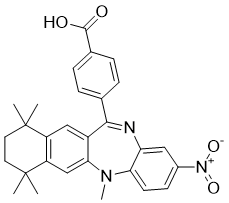In particular, there is great interest in use of pharmacogenomic markers to guide medical decisions regarding the best choice of therapy. Evidence of clinical utility for a given marker is a key issue in translating pharmacogenomics into clinical practice and the extent to which comparative treatment effect differs between subgroups defined by the marker is an important component of assessing clinical utility. We define clinical utility here as the improvement in clinical outcomes resulting from use of a pharmacogenomic test. We exclude from the concept of clinical utility the dimension of cost effectiveness of the pharmacogenomic marker in producing the health gain, although we discuss the application of the method to pharmacoeconomic modelling. Appropriately designed randomised controlled trials can provide robust evidence of the relationship between treatment effect and pharmacogenomic marker status. However, RCT evidence is not always available. Association studies of pharmacogenomic markers are much more common but the results of such studies are less useful for providing insight of the clinical utility. Pharmacogenomic association studies are typically observational cohort or case-control studies which assess the association between a pharmacogenomic marker and clinical/surrogate outcomes for a specific patient population on a specific treatment. Typically the results of a pharmacogenomic association study will highlight that individuals with one value for the marker are at higher risk of an event when using a specific drug, compared to individuals who have a different value for the marker. However, this is generally insufficient to inform whether the pharmacogenomic marker identifies subgroups with clinically important and statistically significant differences in comparative treatment effects. This paper describes the mathematical basis and assumptions of a method for indirectly estimating comparative treatment effect for subgroups defined by a pharmacogenomic marker based on data commonly available for the patient population of interest: pharmacogenomic association studies, the prevalence of the marker, and treatment effect in the unstratified population. A case study for the use of this method is presented, based on the cytochrome P450 genotype subgroup analysis of the RCT comparing ticagrelor and clopidogrel for the prevention of cardiovascular events for individuals with acute coronary syndrome. Evidence generated using this approach is not a substitute for direct evidence from an RCT; however, combined with a sensitivity analysis, this indirect method can provide insight into whether the pharmacogenomic marker is likely to have clinical utility and/or be cost-effective, and hence the value of undertaking further  research. The general approach developed below is to construct a hypothetical trial that embodies the known characteristics of the treatment and pharmacogenomic marker.
research. The general approach developed below is to construct a hypothetical trial that embodies the known characteristics of the treatment and pharmacogenomic marker.
the overall element of pharmacogenomics is the use of genomic information to enable stratified or personalised medicine
Leave a reply